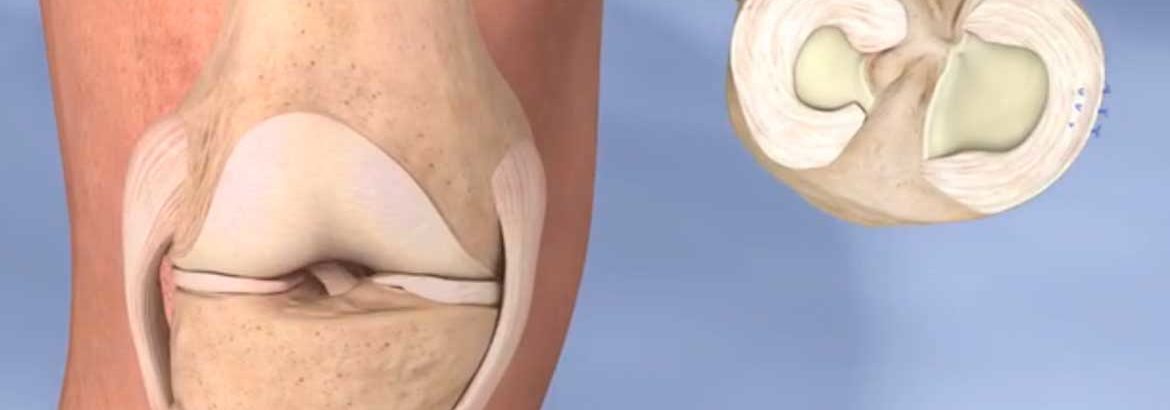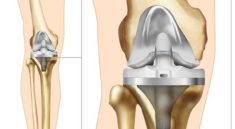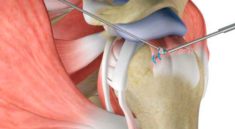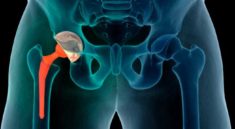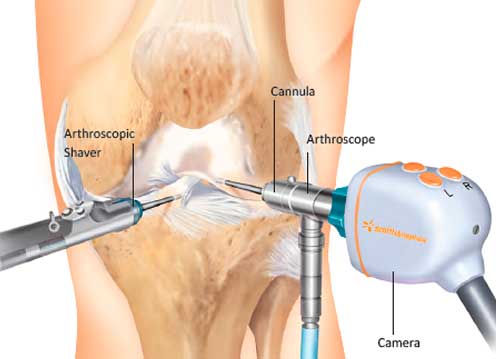
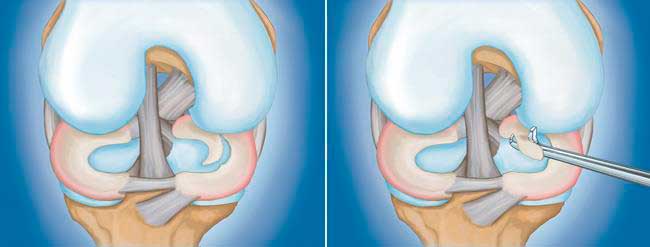
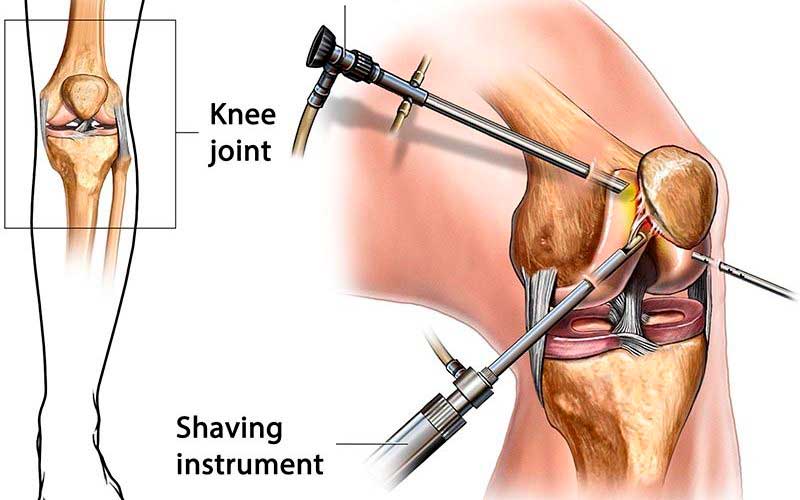
INFORMATION
Knee Arthroscopy
What Is Knee Arthroscopy?
Knee arthroscopy is a surgical technique that can diagnose and treat problems in the knee joint. During the procedure, your surgeon will make a very small incision and insert a tiny camera called an arthroscope into your knee. This allows them to view the inside of the joint on a screen. The surgeon can then investigate a problem with the knee and, if necessary, correct the issue using small instruments within the arthroscope.
Arthroscopy diagnoses several knee problems, such as a torn meniscus or a misaligned patella (kneecap). It can also repair the ligaments of the joint. There are limited risks to the procedure and the outlook is good for most patients. Your recovery time and prognosis will depend on the severity of the knee problem and the complexity of the required procedure.
Why Do I Need Knee Arthroscopy?
Arthroscopic surgery can diagnose and treat knee injuries, including:
- torn anterior or posterior cruciate ligaments
- torn meniscus (the cartilage between the bones in the knee)
- patella that’s out of position
- pieces of torn cartilage that are loose in the joint
- removal of a Baker’s cyst
- fractures in the knee bones
- swollen synovium (the lining in the joint)
How Do I Prepare for Knee Arthroscopy?
Your doctor or surgeon will advise you how to prepare for your surgery. Be sure to tell them about any prescriptions, over-the-counter medications, or supplements that you’re currently taking. You may need to stop taking certain medicines, such as aspirin or ibuprofen, for weeks or days before the procedure.
You must also refrain from eating or drinking for six to 12 hours before the surgery. In some cases, your doctor may prescribe you a pain medication for any discomfort you experience after the surgery. You should fill this prescription ahead of time so that you have it ready after the procedure.
What Happens During a Knee Arthroscopy?
Your doctor will give you an anesthetic before your knee arthroscopy. This may be:
- local (numbs your knee only)
- regional (numbs you from the waist down)
- general (puts you completely to sleep)
If you’re awake, you may be able to watch the procedure on a monitor.
The surgeon will begin by making a few small incisions, or cuts, in your knee. Sterile salt water, or saline, will then pump in to expand your knee. This makes it easier for the surgeon to see inside the joint. The arthroscope enters one of the cuts and the surgeon will look around in your joint using the attached camera. The surgeon can see the images produced by the camera on the monitor in the operating room.
When the surgeon locates the problem in your knee, they may then insert small tools into the incisions to correct the issue. After the surgery, the surgeon drains the saline from your joint and closes your cuts with stitches.
What Are the Risks Associated with a Knee Arthroscopy?
There are risks associated with any type of surgery, though they are rare. Every surgery has the following risks:
- excessive bleeding during the procedure
- infection at the site of the surgery
- breathing difficulties caused by anesthesia
- allergic reaction to anesthesia or other medications administered during surgery
There are also risks specific to a knee arthroscopy, such as:
- bleeding inside the knee joint
- formation of a blood clot in the leg
- infection inside the joint
- stiffness in the knee
- injury or damage to the cartilage, ligaments, meniscus, blood vessels, or nerves of the knee
What Is Recovery Like After a Knee Arthroscopy?
This surgery isn’t very invasive. For most people, the procedure takes less than an hour depending on the specific procedure. You will likely go home on the same day for recovery. You should use an ice pack on your knee and a dressing. The ice will help reduce swelling and minimize your pain.
At home, you should have someone look after you, at least for the first day. Try to keep your leg elevated and put ice on it for a day or two to reduce swelling and pain. You’ll also need to change your dressing. Your doctor or surgeon will tell you when to do these things and for how long. You will probably need to see your surgeon for a follow-up appointment a few days after the procedure.
Your doctor will give you an exercise regimen to follow at home to help your knee recover or will recommend a physical therapist to see until you’re able to use your knee normally. The exercises are necessary to help restore your full range of motion and to strengthen your muscles. With the proper care, your outlook after having this procedure is excellent.
Exercises
Before and after knee arthroscopy surgery, exercises can help. Working with a physical therapist to strengthen the muscles around the knee may help the knee to fully recover.
Doctors may also teach a person some simple stretches and exercises to do at home.
Exercises are a crucial part of treatment. They are needed to restore the knee’s full strength and range of motion.
The choice of exercises will depend on the extent of the problem and a person’s overall condition. It is essential to speak with a doctor or physical therapist before trying exercises at home.
Outlook
The outlook following knee arthroscopy varies from person to person. The severity and type of knee problem can influence the outcome of surgery.
A person’s commitment and ability to support their recovery can also play a role in the outcome.
Many regain full use of their knees after arthroscopy if they follow their doctors’ recovery plans, which include doing exercises and practicing self-care.
How long does it take to recover from arthroscopic knee surgery?
four to six weeks
It takes up to six weeks for the knee joint to re-establish normal joint fluid after arthroscopic surgery. Because of this, you may not realize the benefits of your surgery for four to six weeks. There is a high degree of variability in recovery times
You may be able to return to a desk job or your normal routine in a few days. But if you do physical labour, it may be as long as 2 months before you can return to work.
Can you walk right after arthroscopic knee surgery?
Immediately after surgery, if your pain is minimal when walking, then the use of crutches or a walker is not required. … Once more comfortable, most people are able to walk with a minimal limp within one or two weeks after surgery. Most patients realize a benefit from arthroscopic knee surgery within 4 to 6 weeks.
Is arthroscopy painful?
Nonsurgical treatment includes rest, physical therapy, and medications or injections that can reduce inflammation. Knee arthroscopy may relieve painful symptoms of many problems that damage the cartilage surfaces and other soft tissues surrounding the joint
Call your doctor if:
Your foot or toes are numb or tingling.
Your foot is cool or pale, or it changes colour.
You have signs of a blood clot, such as:
Pain in your calf, back of the knee, thigh, or groin.
Redness and swelling in your leg or groin.
You are sick to your stomach or cannot keep fluids down.
You have pain that does not get better after you take pain medicine.
You have loose stitches, or your incision comes open.
Bright red blood has soaked through the bandage over your incision.
You have signs of infection, such as:
Increased pain, swelling, warmth, or redness.
Red streaks leading from the incisions.
Pus draining from the incisions.
A fever.

